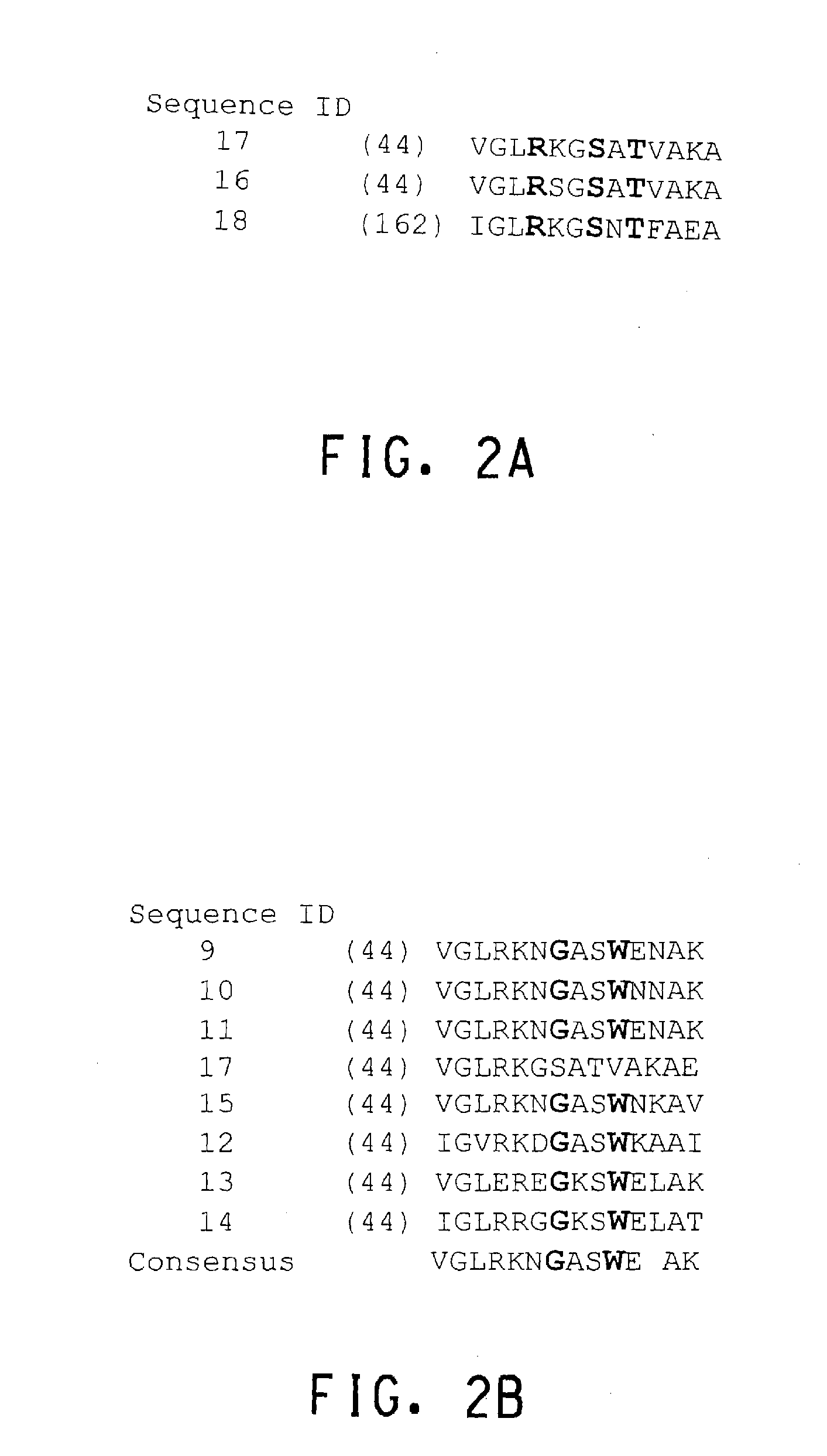Ketol-acid reductoisomerase using nadh
a reductoisomerase and ketolacid technology, applied in the field of protein evolution, can solve the problems of reducing the energy affecting the efficiency of the pathway,
- Summary
- Abstract
- Description
- Claims
- Application Information
AI Technical Summary
Benefits of technology
Problems solved by technology
Method used
Image
Examples
example 1
Construction of Site-Saturation Gene Libraries to Identify Mutants Accepting NADH as Cofactor
[0234]Seven gene libraries were constructed (Table 2) using two steps: 1) synthesis of Megaprimers using commercially synthesized oligonucleotides described in Table 1; and 2) construction of mutated genes using the Megaprimers obtained in step 1. These primers were prepared using high fidelity pfu-ultra polymerase (Stratagene, La Jolla, Calif.) for one pair of primer containing one forward and one reverse primer. The templates for libraries C, E, F, G and H were the wild type of PF5_ilvc. The DNA templates for library N were those mutants having detectable NADH activity from library C while those for library O were those mutants having detectable NADH activity from library H. A 50 μl reaction mixture contained: 5.0 μl of 10× reaction buffer supplied with the pfu-ultra polymerase (Stratagene), 1.0 μl of 50 ng / μl template, 1.0 μl each of 10 pmol / μl forward and reverse primers, 1.0 μl of 40 mM...
example 2
Construction of Error Prone PCR Library
[0237]Mutants obtained in Example 1, with mutations in their cofactor binding sites which exhibited relatively good NADH activities, were used as the DNA template to prepare the error prone (ePCR) libraries using the GeneMorph II kit (Stratagene) as recommended by the manufacturer. All the epPCR libraries target the N-terminal (which contains the NADPH binding site) of PF5_KARI. The forward primer (SEQ ID No: 20) and the reverse primer (SEQ ID No: 22) were used for all ePCR libraries.
[0238]The DNA templates for the nth epPCR library were mutants having good NADH activity from the (n−1)th epPCR library. The templates of the first epPCR library were mutants having relatively good NADH activity from libraries N and O. The mutations rate of library made by this kit was controlled by the amount of template added in the reaction mixture and the number of amplification cycles. Typically, 1.0 ng of each DNA template was used in 100 μl of reaction mixtu...
example 3
Identification of Amino Acids for Cofactor Specificity Switching Using Bioinformatic Tools
[0239]To discover if naturally existing KARI sequences could provide clues for amino acid positions that should be targeted for mutagenesis, multiple sequence alignment (MSA) using PF5_KARI, its close homolog PAO1_KARI and three KARI sequences with measureable NADH activity, i.e., B. Cereus ilvC1 and ilvC2 and spinach KARI were performed (FIG. 8). Based on the multiple sequence alignment, positions 33, 43, 59, 61, 71, 80, 101, and 119 were chosen for saturation mutagenesis. Saturation mutagenesis on all of these positions was performed simultaneously using the QuickChange II XL site directed mutagenesis kit (Catalog #200524, Stratagene, La Jolla Calif.) with the manufacturer's suggested protocol. Starting material for this mutagenesis was a mixed template consisting of the mutants already identified in Example 2, Table 4. The primers used are listed in Table 5. The library of mutants thus obtai...
PUM
| Property | Measurement | Unit |
|---|---|---|
| concentration | aaaaa | aaaaa |
| concentration | aaaaa | aaaaa |
| temperature | aaaaa | aaaaa |
Abstract
Description
Claims
Application Information
 Login to View More
Login to View More - R&D
- Intellectual Property
- Life Sciences
- Materials
- Tech Scout
- Unparalleled Data Quality
- Higher Quality Content
- 60% Fewer Hallucinations
Browse by: Latest US Patents, China's latest patents, Technical Efficacy Thesaurus, Application Domain, Technology Topic, Popular Technical Reports.
© 2025 PatSnap. All rights reserved.Legal|Privacy policy|Modern Slavery Act Transparency Statement|Sitemap|About US| Contact US: help@patsnap.com



